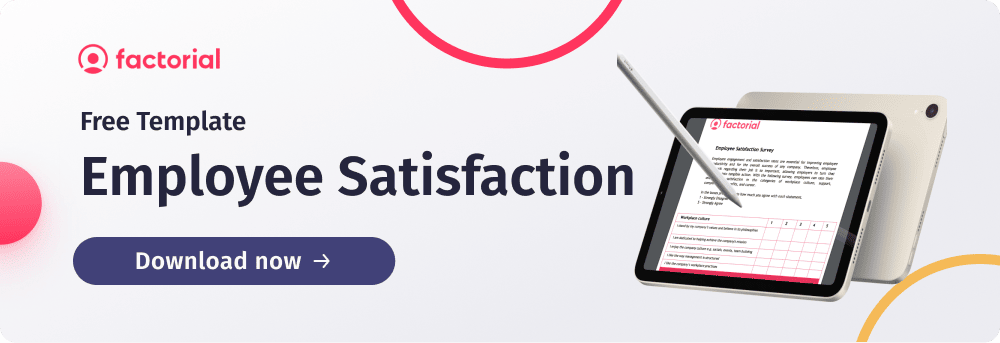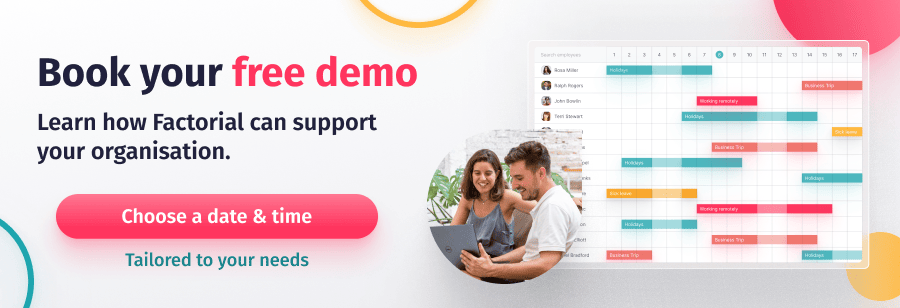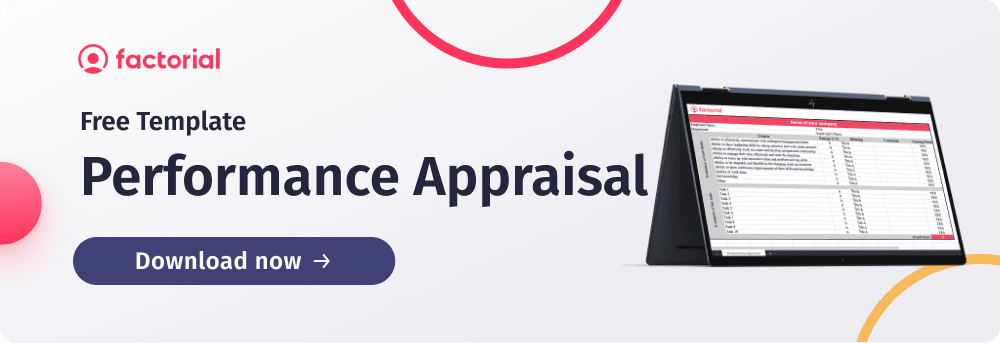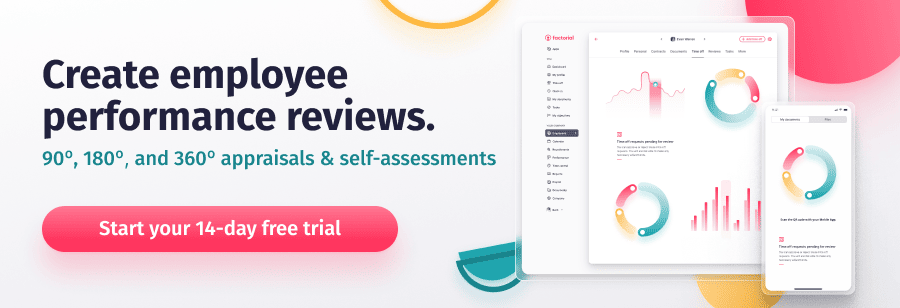Until a few years ago, customer satisfaction was the primary measure of a company’s reputation and success. But, now forward-thinking companies understand that how their employees connect with the organisation is just as important.
There are many actions that can be done to improve the culture of the company and make it a place where people enjoy working. But how can we measure the commitment of our employees and know if the implemented initiatives have a positive impact? One of the systems that organisations most use is the Employee Net Promoter Score or eNPS, a simple but powerful tool.
What is the Meaning of eNPS?
The Employee Net Promoter Score is a system that allows us to measure the loyalty and engagement of the largest collaborators of our company – our employees. In addition, the eNPS helps track employee engagement and measure the impact of strategies implemented to strengthen employee engagement.
This metric is based on a scale of zero to ten with a very simple question. But at the same time it gives voice to our team: How likely are you to recommend us as a place to work?
Thus, we will know how committed our internal customers are and how likely they would recommend our company. More and more organisations are using this metric because they are aware that employee loyalty is a fundamental part of the company’s culture and business objectives.
Net Promoter Score vs. Employee Net Promoter Score
Since 2003, many organisations began using the Net Promoter Score (NPS) to measure the popularity of their products and services, when Fred Reichheld, a partner at Bain & Company, created this metric. This measurement system is one of the most popular and the Employee Net Promoter Score derives from it.
Both tools contribute to improving aspects crucial to the success of the company: just as a satisfied customer is likely to recommend a company or as dissatisfied customers would leave bad reviews. Unmotivated workers can affect the brand reputation while engaged employees will help attract new talent, foster company culture and increase productivity.
How to Measure eNPS?
The eNPS formula is very simple! To calculate the Employee Net Promoter Score, the happiest employees (promoters) and the least happy (detractors) are subtracted.

The best way to measure it is to use software to evaluate the performance of your employees where you can create recurring eNPS surveys with the question “Would you recommend your company as a place to work?”. Employees should answer this question on a scale of 0 to 10, with 0 being the lowest probability of recommending their company and 10 being the highest probability.
How to Interpret the eNPS Indicators?

Detractors (0-6 scores)
Employees who give a score between 0 and 6 are known as detractors and are the most likely to speak negatively of the company. Therefore, they probably do not recommend employment within the organisation since they are poorly motivated and underperforming.
Passives (from 7 to 8)
Employees who give a 7 or 8 are called passives: the calculation does not take into account their scores, but they are still considered in the number of employees. They are usually people who are not entirely loyal, but they are not negative either.
Passive employees can be happy in the workplace without being particularly engaged. It can even happen that employees enjoy their work because it allows them to disconnect and relate to others, a common trait within the passives.
Promoters (from 9 to 10)
Promoters are the employees who give a score of 9 or 10. They are the ones who consider themselves the most loyal to the company and who will enthusiastically recommend employment. They are fully committed and can play the role of brand ambassadors!
They are likely to be very satisfied with their own performance, which is great for them as individuals and for the company as well because they contribute to improving profitability. In addition, promoters often spread positive messages from the company to their environment through word of mouth.
Example of the eNPS Calculation
Suppose a company has 120 employees. And its most recent survey shows 24 promoters (20%), 62 passives (52%), and 34 detractors (28%).
The passives should be ignored at the time of final calculation. It would then be 20% (promoters) minus 28% (detractors), so the result would be -8.
To be a little more exact, everything that is positioned above a 0 can be considered a positive result. Now, from 0 to 50 it will be considered as a GOOD result, from 50 to 70 it will be considered a VERY GOOD one, and from 70 to 100 it is defined as EXCELLENT.
Points to Consider when Preparing an eNPS Survey
Determine the frequency
This metric is very easy to obtain, measure and analyse. Therefore, we can do this survey once every quarter; to be able to make decisions and increase the loyalty of our employees.
In addition, having surveys from time to time makes the team a habit of answering questions. This frequency is ideal for detecting changes in employee satisfaction throughout each quarterly period.
Anonymous surveys
For an eNPS to be successful, it must be developed confidentially, so the employees should have the freedom to be completely honest in their answers. On the other hand, it is not only necessary for the survey to be anonymous. But everyone involved must also be assured that their identities will not be compromised in the event that they give a low rating.
Set reminders
As we have already mentioned, this metric is easy to obtain since it is a single simple question. Participation rates are expected to be relatively high. Therefore, it should not need as much follow-up as it would have to be used for longer surveys.
That said, it’s worth sending out a couple of reminders in case the first email catches someone at a bad time. An HR platform for companies like Factorial can help you automate this whole process.
Three Main Benefits of Using eNPS in Your Company
It’s a simple process
One of the benefits is that getting the eNPS score is easy. Business executives don’t have to spend hours and hours thinking about the right questions for the survey. And for their part, employees only have to choose the score on a scale of 0 to 10.
Easy to implement
The process requires only a brief introduction, in case some of the employees haven’t heard of the concept before. It’s a simple thing to explain. It’s enough to know if people would recommend the company as an ideal place to work. The detail is that this simple answer will tell a lot about employee engagement and at the same time it will require very little of their time when surveying them.
Beneficial tool
Financially speaking, it is a safe and economical way to check the satisfaction levels of our workforce. Since it only takes one email to get started and you can measure the Employee Net Promoter Score with little investment of time and budget.
Ways to Improve eNPS
Let’s take a look at a few strategies and best practices you can use to improve your eNPS.
Include a follow-up question
Strictly speaking, the eNPS survey is based on just one question: “How likely are you to recommend your workplace to your friends and family on a scale of 0-10?”
However, you can also use the survey as an opportunity to collect qualitative data from participants. You can do this by including an open-ended follow-up question inviting them to explain the reasons for their score. This will help you understand why an employee is happy or unhappy. And these answers will give you the constructive feedback you need to create strategies to address identified issues.
Remember to keep it simple though. The question should be brief and open-ended. It should serve as a platform for employees to explain why they have given the score that they gave. If you have any other questions then save them for more comprehensive employee feedback surveys.
Use feedback to create strategies to improve employee engagement
Perhaps the most valuable tip we can give is to make sure you use your feedback to create strategies to improve employee engagement. Without these strategies, your eNPS is unlikely to improve over time.
For example, if your feedback suggests that employees are unhappy with the lack of diversity and inclusion in your organisation, then you could implement a series of DEI initiatives to promote diversity. Or if employees complain about a lack of career progression, you could implement a learning and development program to help them learn new skills.
It’s all about identifying areas for improvement and listening to what your employees need. Once you’ve done that, act on their feedback and do what you can to provide them with the culture and working environment they need to become engaged, motivated, and productive members of your team.
Remind employees that your eNPS survey is anonymous
When you share your eNPS survey, remind your employees that their feedback is anonymous. This will reassure them that they can be open and honest with their answers without fear of recrimination. And that will help you get a much more authentic perspective on how happy your workforce is.
This is also a good opportunity to remind your employees that you are actively listening to them and that you care about what they have to say. This will help your employees feel valued and heard. It will also show them that you are committed to continuously improving their working environment.
Keep an open mind
When you collect your results and calculate your score, make sure you keep an open mind. Don’t take any feedback personally. Remember, negative and constructive feedback is an opportunity for you to improve. Don’t get defensive if you don’t see the results you’d hoped for.
Measure your eNPS regularly
Finally, the ultimate aim of calculating your eNPS is to improve your employee experience. It’s therefore important that you regularly measure your score to see how you are progressing. That way, you can see what sort of an impact any new strategies or organisational changes are having on the overall engagement and satisfaction levels of your workforce.
Remember, a stand-alone score is meaningless. Make it count by checking in regularly with your employees to see what they think about your business. Ideally, you want to see your score improve over time. If it doesn’t, then you need to re-evaluate your strategies to work out where you’re going wrong. That way, you will fully benefit from everything that the eNPS has to offer.
Factorial and the Calculation of eNPS
The People Team at Factorial has been able to use this method easily, quickly and through a single platform. The results obtained with our eNPS have been excellent. We have obtained more than 67% of employee satisfaction!
Even so, we will continue working to improve the loyalty of our collaborators. From the People team: “We are very happy with the great commitment shown by our great Factorial team”.




